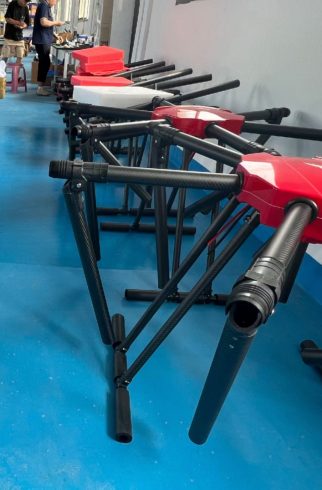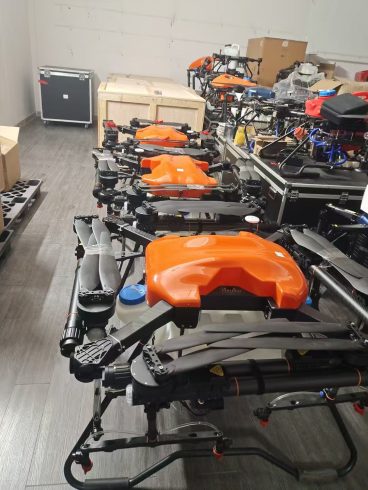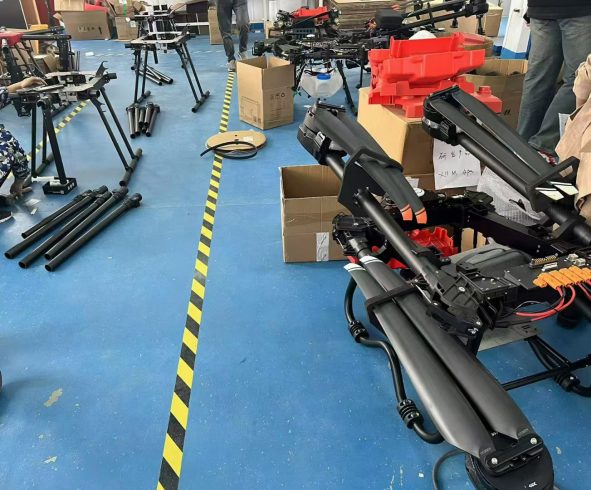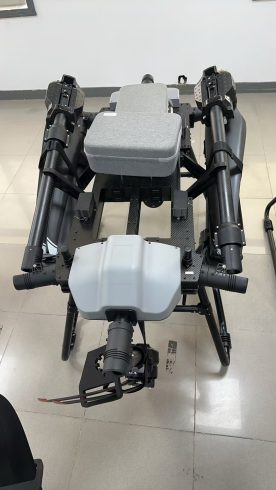![图片[1]-Data Collection with Spraying Drones: Transforming Agriculture Through Precision and Insights-msoen](https://www.msoen.com/wp-content/uploads/2025/04/5bb323e000184638-674x1024.jpg)
The integration of drones into agriculture has evolved beyond mere chemical application. Modern spraying drones now serve as powerful data collection tools, enabling farmers to gather actionable insights on crop health, soil conditions, and environmental factors. By combining spraying capabilities with advanced sensors and analytics, these drones bridge the gap between precision agriculture and real-time decision-making. This article explores how spraying drones collect and utilize data to optimize farming practices, enhance yields, and promote sustainability.
- The Role of Spraying Drones in Agricultural Data Collection
Spraying drones are equipped with multimodal sensors and software platforms that collect high-resolution data during flight. Unlike traditional methods, drones provide:
- Non-Invasive Monitoring: Access hard-to-reach areas (e.g., dense canopies, steep slopes) without disturbing crops.
- Real-Time Data Streams: Capture field conditions instantaneously, enabling rapid responses to threats like pests or water stress.
- Multi-Layered Insights: Combine chemical application data with environmental variables (e.g., temperature, humidity) for holistic analysis.
- Key Data Collection Technologies in Spraying Drones
a. Multispectral and Hyperspectral Imaging
- Crop Health Analysis: Detect variations in plant chlorophyll levels, moisture content, and nutrient deficiencies by analyzing reflected light wavelengths.
- Early Disease Detection: Identify fungal infections or viral outbreaks before visible symptoms appear. b. LiDAR (Light Detection and Ranging)
- 3D Terrain Mapping: Create elevation models to identify drainage issues, soil erosion patterns, or uneven terrain.
- Canopy Structure Analysis: Measure leaf density and canopy closure to optimize spray penetration and light exposure. c. Thermal Imaging
- Water Stress Detection: Identify under-irrigated areas by detecting temperature variations across fields.
- Pest Hotspot Identification: Locate insect infestations based on heat signatures from pest activity. d. Environmental Sensors
- Weather Stations: Monitor on-board data like wind speed, humidity, and precipitation to adjust spraying parameters.
- Soil Moisture Sensors: Sync with drones to correlate soil hydration levels with crop health metrics.
- Workflow of Data Collection and Utilization
Step 1: Pre-Flight Planning
- Use satellite imagery or drones to create 3D field maps, defining zones of interest (e.g., high-risk pest areas). Step 2: Flight Execution
- Drones traverse fields while sensors collect data in real time.
- Example: A drone sprays fungicide on a wheat field while simultaneously logging soil pH and moisture levels. Step 3: Post-Flight Data Processing
- AI-Driven Analytics: Machine learning algorithms process data to generate actionable insights (e.g., variable-rate prescription maps).
- Cloud Integration: Store and share data with farm management systems, agronomists, or supply chain partners. Step 4: Decision-Making
- Adjust future spraying schedules, irrigation plans, or fertilizer applications based on data trends.
- Applications Across Farming Systems
a. Row Crop Management
- Corn and soybean farms use drone data to map nitrogen deficiencies, enabling precise fertilizer application. b. Orchard and Vineyard Optimization
- Drones collect canopy temperature data to optimize irrigation in drought-prone vineyards. c. Sustainable Farming
- Data on pesticide runoff helps farmers comply with environmental regulations and adopt eco-friendly practices. d. Insurance and Risk Management
- Insurers leverage drone-collected data to assess crop damage claims objectively.
- Challenges and Solutions
a. Data Overload
- Challenge: Managing terabytes of sensor data from multiple flights.
- Solution: Edge computing devices preprocess data on-site, reducing cloud storage costs. b. Sensor Calibration
- Challenge: Variability in sensor accuracy due to weather or hardware wear.
- Solution: Automated calibration protocols and redundant sensor arrays. c. Connectivity Gaps
- Challenge: Limited internet access in remote farmlands.
- Solution: Offline data storage with sync capabilities when connectivity resumes.
- Future Trends in Drone Data Collection
- Digital Twins: Virtual replicas of farms fed by real-time drone data for predictive modeling.
- Blockchain Integration: Secure, immutable records of data collection and spraying operations for sustainability certifications.
- 5G Connectivity: High-speed data transmission enabling real-time swarm coordination and AI-driven adjustments.
- Swarm Intelligence: Fleets of drones collaborating to collect hyper-localized data across vast farms.
- Case Study: Precision Rice Farming in Asia
In Vietnam, drones equipped with multispectral cameras and soil sensors collected data on nitrogen levels and water stress across 500 hectares of rice paddies. The data revealed under-fertilized zones, allowing farmers to apply nutrients precisely, boosting yields by 20% while reducing fertilizer use by 30%.
Conclusion
Spraying drones are no longer just tools for chemical application—they are data powerhouses transforming agricultural decision-making. By collecting and analyzing real-time insights on crop health, soil conditions, and environmental factors, these drones empower farmers to work smarter, reduce waste, and adapt to climate challenges. As AI and edge computing mature, the synergy between spraying and data collection will redefine precision agriculture, making it more efficient, sustainable, and resilient than ever before.
Keywords: drone data collection, precision agriculture, multispectral imaging, LiDAR in farming, AI-driven analytics, sustainable agriculture technology.












暂无评论内容